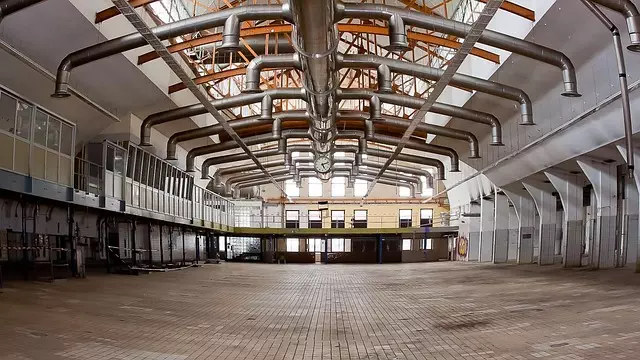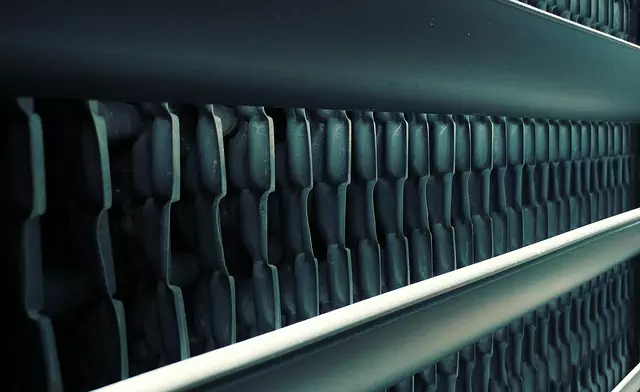Optimizing equipment lifespan in industrial settings hinges on enhancing workplace air quality management through advanced industrial ventilation systems. By integrating regular inspections, data-driven decisions, and strategic interventions, businesses can ensure ventilation safety standards while boosting system efficiency. This holistic approach not only prolongs equipment lifespan but also creates a healthier, safer work environment for all stakeholders.
Equipment lifespan optimization in industrial ventilation systems is a critical aspect of workplace air quality management. By understanding the factors that contribute to the deterioration of these systems, organizations can implement targeted strategies to enhance ventilation safety standards. This article explores key areas such as regular maintenance, inspection protocols, and best practices to ensure optimal performance, extend system lifespan, and maintain a healthy work environment.
- Understanding Equipment Lifespan Optimization in Industrial Ventilation Systems
- Workplace Air Quality Management: Strategies for Maximizing Ventilation Safety Standards
- Best Practices for Regular Maintenance and Inspection to Extend Ventilation System Lifespan
Understanding Equipment Lifespan Optimization in Industrial Ventilation Systems
Equipment lifespan optimization is a strategic approach aimed at enhancing the longevity and efficiency of industrial ventilation systems. In the context of workplace air quality management, these systems play a pivotal role in ensuring optimal conditions for employees while adhering to stringent ventilation safety standards. Regular maintenance, proactive monitoring, and data-driven decisions are key components that contribute to this optimization process.
By implementing advanced technologies and regular inspections, businesses can identify potential issues early on, minimizing unexpected breakdowns. This not only enhances the overall efficiency of the ventilation systems but also improves workplace safety by reducing risks associated with faulty equipment. In line with ventilation safety standards, continuous optimization ensures a healthier, more productive work environment, ultimately benefiting both employees and employers alike.
Workplace Air Quality Management: Strategies for Maximizing Ventilation Safety Standards
Maintaining optimal workplace air quality is an integral part of equipment lifespan optimization, especially in industrial settings where workers are constantly exposed to various elements. Implementing robust ventilation systems, such as industrial ventilation solutions, plays a pivotal role in enhancing worker safety and ensuring adherence to strict ventilation safety standards. These specialized systems are designed to control and eliminate hazardous contaminants, ensuring a safe and healthy environment for employees.
Effective workplace air quality management involves regular assessments and strategic interventions. By monitoring air quality, identifying potential risks, and adhering to recommended guidelines, organizations can maximize the lifespan of their equipment while prioritizing worker well-being. This includes utilizing advanced ventilation technologies, maintaining proper system functionality, and regularly replacing or cleaning filters to prevent buildup of dust, dirt, or other pollutants that could compromise both air quality and machinery performance.
Best Practices for Regular Maintenance and Inspection to Extend Ventilation System Lifespan
Regular maintenance and inspection are crucial for extending the lifespan of industrial ventilation systems. A well-maintained system not only enhances workplace air quality management but also ensures ventilation safety standards are met. Best practices include scheduling routine inspections at least every six months to identify potential issues such as damaged filters, leaks in ductwork, or blocked vents. During these checks, professionals should verify that all components are functioning optimally and replace any worn-out parts promptly.
Additionally, implementing a cleaning regimen is vital. Dust, debris, and other contaminants can accumulate over time, reducing airflow efficiency. Regular deep cleaning using appropriate methods and chemicals ensures the system remains efficient, thereby improving indoor air quality and worker comfort. Adhering to these best practices helps prevent costly breakdowns and extends the service life of ventilation systems, fostering a healthier and safer workplace environment.


